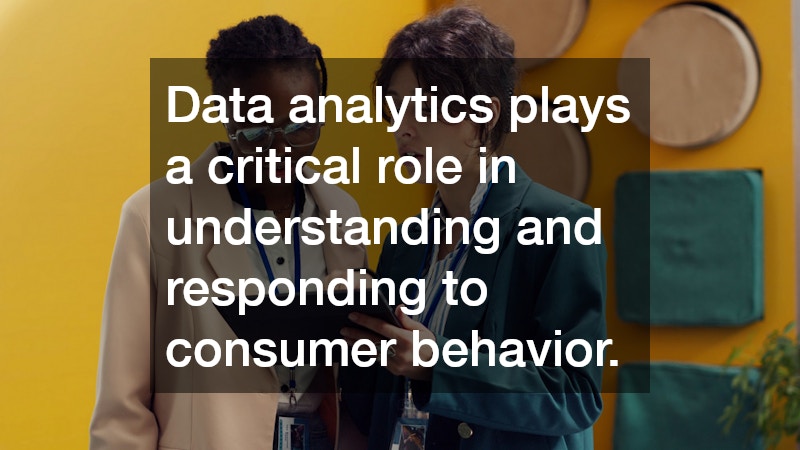
The Future of Brand Building in a Digital-First World
Introduction
In today’s technologically driven society, traditional strategies that once defined brand building are being transformed by digital advancements. The rapid evolution of digital tools has prompted businesses to reevaluate their approaches, as the digital-first landscape introduces new opportunities and challenges. As businesses navigate this shift, understanding the nuances and potential of digital tools becomes paramount in developing effective brand-building strategies. The subsequent sections will explore how digital transformation, social media, and the need for authenticity are shaping the future of brand building.
How is Digital Transformation Changing Brand Strategies?
Subsection
With the integration of digital tools and platforms, branding efforts have undergone a significant transformation. Digital transformation involves incorporating advanced technologies that streamline processes and enhance efficiency. This incorporation allows businesses to engage with consumers in novel ways, making interactions more personalized and accessible. From automated customer service via chatbots to tailored marketing campaigns, digital tools are at the forefront of redefining consumer engagement. By leveraging these technologies, brands can create more immersive and inclusive experiences that resonate with digital-savvy audiences.
Moreover, digital transformation is reshaping how brands communicate their messages. The traditional one-way communication model has evolved into an interactive dialogue where consumer feedback and brand messaging are interwoven. Businesses are now restructuring their brand messages to fit digital formats and platforms, ensuring they remain relevant and impactful. To maintain a competitive edge, companies are not just crafting messages but are also focusing on delivering them through the right channels to reach their target audience effectively. This strategic shift is essential in an era where consumer attention spans are shorter, and content consumption is more fragmented.
Data analytics plays a critical role in understanding and responding to consumer behavior. With the abundance of data available, brands have unprecedented insight into consumer preferences and patterns. This information is invaluable for tailoring products, services, and communications to meet consumer demands. Predictive analytics and AI-driven insights enable brands to anticipate changes and adapt their strategies accordingly. Ultimately, the integration of data analytics empowers businesses to create more efficient, responsive, and adaptable brand strategies that are aligned with consumer needs and expectations.
What Role Does Social Media Play in Brand Building?
Subsection
Social media has become an indispensable tool in the arsenal of modern brand-building strategies. It not only transforms how brands communicate with their audience but also significantly impacts consumer engagement and brand loyalty. Platforms like Facebook, Instagram, and Twitter provide a space for brands to interact directly with consumers, fostering a sense of community and belonging. These interactions often result in increased loyalty, as consumers appreciate brands that listen to them and respond to their needs. Through social media, brands can engage in two-way communication, promoting transparency and trustworthiness.
Effective strategies for leveraging social media platforms are crucial for enhancing brand visibility. By understanding the unique characteristics and user demographics of each platform, brands can tailor their content to maximize engagement. For example, Instagram, with its focus on visuals, serves as an ideal platform for lifestyle and fashion brands, while LinkedIn is more suited for professional networking and B2B interactions. Brands must also stay ahead of emerging trends and platform features, such as Instagram Stories or TikTok challenges, to maintain visibility and relevance in a dynamic social media landscape.
Managing a brand’s online reputation poses both challenges and opportunities. The digital space is a double-edged sword; while it amplifies a brand’s message, it also exposes it to potential backlash and criticism. Brands must be proactive in monitoring their online presence and addressing any negative perceptions swiftly. This involves not only managing content but also engaging with users to resolve issues and build positive relationships. The ability to swiftly adapt to challenges and capitalize on opportunities is integral to maintaining a strong online reputation and fostering long-term consumer trust.
How Can Brands Maintain Authenticity in a Digital Age?
Subsection
In a world where digital interactions are ubiquitous, authenticity has emerged as a pivotal component of effective brand communication. Consumers today are increasingly discerning, valuing transparency and authenticity over polished marketing messages. Brands that communicate honestly and openly resonate more with their audiences, fostering a sense of trust. Authenticity in branding can be achieved by aligning business practices with brand values and consistently reflecting them in all forms of communication. This approach not only enhances credibility but also differentiates a brand in a crowded digital marketplace.
Creating content that appears genuine and trustworthy is an art that brands must master to maintain authenticity. To achieve this, brands can focus on storytelling that highlights real experiences and humanizes their messages. For instance, featuring customer testimonials or behind-the-scenes glimpses of company operations can make the brand’s narrative more relatable and believable. Additionally, consistent brand voice and tone across all platforms contribute to perceived authenticity, ensuring audiences understand and relate to the brand’s personality.
Consumer feedback and interaction play a critical role in enhancing a brand’s authenticity. By actively seeking feedback and engaging with consumers, brands can demonstrate that they value the consumer’s voice, further establishing trust. Participating in conversations, addressing concerns, and adapting based on consumer input showcase a brand’s commitment to authenticity and improvement. This consumer-centric approach not only solidifies customer relationships but also creates loyal brand advocates who appreciate and trust the brand’s dedication to authenticity.
Conclusion
As the digital landscape continues to evolve, so too must the strategies for brand building. The integration of digital tools, the strategic use of social media, and an unwavering commitment to authenticity are key components that will define successful brands in a digital-first world. Businesses must remain agile and innovative, continually adapting their approaches to align with changing consumer behaviors and technological advancements. As we look to the future, brands that can effectively blend tradition with technology while maintaining genuine connections with their audiences are poised to thrive in this digital era.





